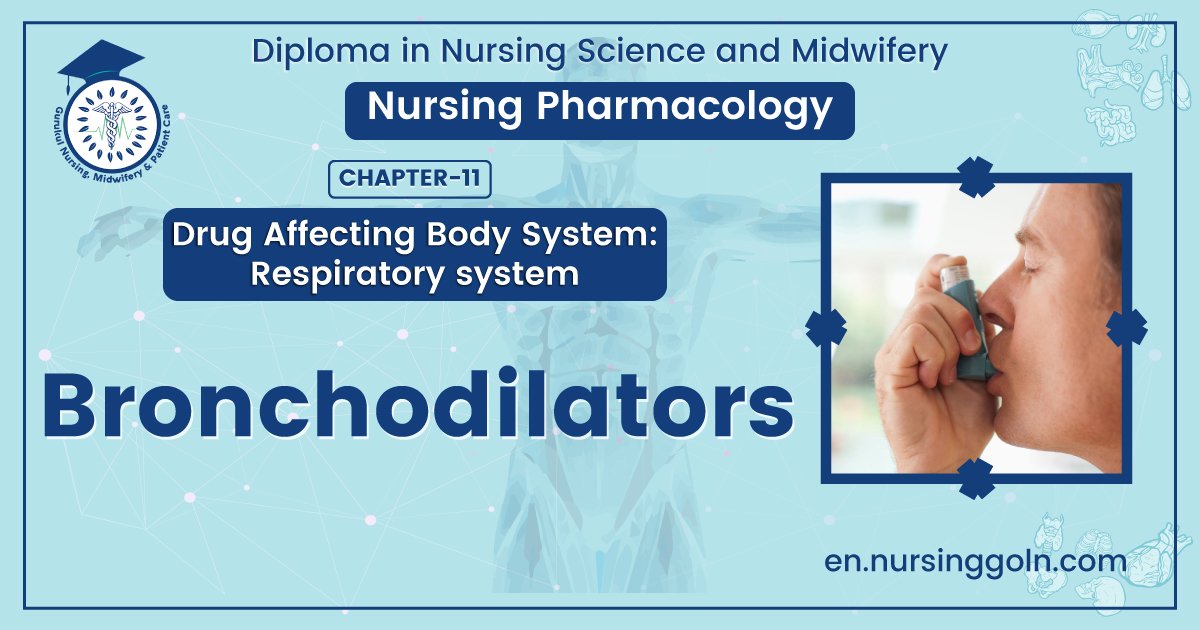Concept About Bronchodilators – This book covers the entire syllabus of “Pharmacology” prescribed by BNMC- for diploma in nursing science & midwifery students. We tried to accommodate the latest information and topics. This book is an examination setup according to the teachers’ lectures and examination questions.
At the end of the book, previous questions are given. We hope in touch with the book students’ knowledge will be upgraded and flourish. The unique way of presentation may make your reading of the book a pleasurable experience.
Concept About Bronchodilators
Bronchodilators:
Bronchodilator are the drug which causes relaxation or dilatation of bronchial tree.
Classification of bronchodilator:
a) Beta agonist:
- Sulbutamol
- Terbutaline
- Ephedrine
- Isoprenaline
- Rimiterol
b) Xanthine derivatives:
- Theophylline
- Aminophylline
- Caffeine
- Enprophyline

c) Anti-cholinergic bronchodilator:
- atropine
d) Antihistamines:
- Ketotifen
- Azalastin
Indication of salbutamol:
- Broncho spasm
- Bronchial asthma
- Chronic bronchitis
- Emphysema
- Abortion
Contraindication of salbutamol:
- Hyperthyroidism
- Ischemic heart disease
- Diabetes mellitus

Adverse effect of salbutamol:
- Nervousness
- Drowsiness
- Dizziness
- Headache
- Tremor
Indication of aminophyline:
- Severe bronchial asthma
- Chronic asthma
- Bronchospasm
- headache, migraine
- left ventricular failure
- Chronic obstructive pulmonary disease
Contraindication of aminophyline:
- Cardiac failure
- Liver disease
- Peptic ulcer
- Pregnancy

Adverse effect of Aminophyline:
- Nausea
- Headache
- Dizziness
- Nervousness
- Cardiac arrhythmia
- Convulsion
- Tachycardia
Aminophyline is given to patient of severe asthma intravenously. Because orally drugs take more time to absorb but intravenously given drugs does not need to any time for absorbtion. It directly mixed with plasma.
A bronchodilator or broncholytic (although the latter occasionally includes secretory inhibition as well) is a substance that dilates the bronchi and bronchioles, decreasing resistance in the respiratory airway and increasing airflow to the lungs. Bronchodilators may be originating naturally within the body, or they may be medications administered for the treatment of breathing difficulties, usually in the form of inhalers. They are most useful in obstructive lung diseases, of which asthma and chronic obstructive pulmonary disease are the most common conditions. Although this remains somewhat controversial, they might be useful in bronchiolitis and bronchiectasis. They are often prescribed but of unproven significance in restrictive lung diseases.
Read more:
